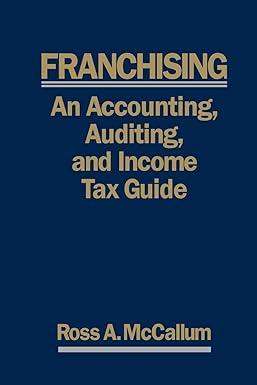1. A cost that remains constant in totals but varies in a per unit basis with changes in activity is called a. Expired cost b. Fixed cost c. Variable cost d. Mixed cost 2. Which of the following is not a product cost component? a. Rent on a factory building b. Indirect production labor wages c. Janitorial supplies used in factory d. Commission on the sale of a product 3. The indirect cost of converting raw material into finished goods are called a. Period costs b. Prime costs c. Overhead costs d. Conversion costs 4. Conversion cost does not include a. Direct labor b. Direct material c. Factory depreciation d. Supervisor's salaries 5. The distinction between the direct and indirect costs depends on whether the cost a. Is controllable or non-controllable b. Is variable or fixed c. Can be conveniently and physically traced to a cost object under consideration d. Will increase with changes in levels of activity 6. Edge Cut Company is a construction company that builds greenhouses on special request. What is the proper classification of the carpenter's wages? Product Period Direct a. Yes b. Yes Yes No c. No No Yes d. No No No Yes Yes 7. All costs related to manufacturing function of a company are a. Prime costs b. Direct costs c. Product costs d. Conversion costs 8. Which of the following statements are true? I. A company that produces sugar will use a process costing system to track production cost II. A company that produces custom bridal gown will use a job order costing system to track production cost a. Both I and II b. I only c. II only d. None of the statements are true 9. Which of the following statements are true? I. In a normal job order costing system, factory overhead is applied using predetermined rates times actual input II. In a job order costing system, costs are accumulated for each individual job a. I only b. II only c. Both I and II d. None of the statements are true 10. Over-applied overhead that is material in amount is allocated between Finished Goods inventory, Work in process Inventory and Cost of Goods sold at year end. Over-applied factory overhead that is immaterial in amount is closed to cost of Goods Sold at year end. a. First and second sentence are true b. First and second sentence are false c. Only the first statement is true d. Only the second statement is true 11.Process costing is most appropriate when manufacturing large batches of homogeneous products. Conversion cost includes all manufacturing cost other than direct materials. a. First and second sentence are true b. First and second sentence are false c. Only the first statement is true d. Only the second statement is true 12. Under applied overhead occurs when a. Actual overhead is less than applied overhead b. The actual overhead rate is less than the predetermined overhead rate c. The predetermined overhead rate is less than the actual rate d. The predetermined overhead rate is overstated








